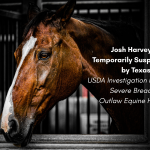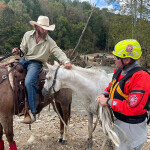Overwhelmed? Use our ultimate horse care checklist to create a simple daily, weekly, and monthly routine for a happy, healthy horse. Free PDF download
Owning a horse is a deeply rewarding experience, but it comes with significant responsibility. Establishing a consistent horse care routine is the best way to ensure your equine partner stays healthy, happy, and safe. For new owners, the sheer number of tasks can feel overwhelming. This is where a horse care checklist becomes your most valuable tool.
This guide breaks down all the essential tasks into a manageable schedule: daily, weekly, and monthly. By creating a structured horse care routine, you can stay organized, prevent potential health issues, and build a stronger bond with your horse.
We'll cover everything you need to keep your horse in top condition, from feeding and grooming to checking their environment.
Table of contents [Show]
Why a Horse Care Routine is Essential
Horses are creatures of habit. They thrive on predictability, and a consistent routine helps reduce stress and promotes a sense of security. Beyond the psychological benefits, a structured approach to care allows you to notice small changes in your horse's health or behavior quickly.
Catching a minor issue—like a small cut, a change in appetite, or a slight limp—before it becomes a major problem is the cornerstone of good horsemanship. Your daily checks are the first line of defense in preventative care.
Daily Horse Care Checklist (Do these 1-2 times per day)
These tasks are non-negotiable and form the foundation of your horse's well-being. Most owners perform these checks in the morning and evening.
Health & Wellness Check
- Observe Behavior: Take a moment to watch your horse. Are they bright, alert, and interested in their surroundings? Note any signs of lethargy, depression, or anxiety.
- Check Legs and Body: Run your hands over your horse's entire body and down each leg. Feel for any heat, swelling, cuts, scrapes, or sensitive spots. Pick up each foot to check for rocks, heat, or signs of thrush.
- Monitor Manure and Urine: Check the stall or paddock for fresh manure. Note the consistency and quantity. Irregular droppings or a lack of them can be an early sign of colic.
- Look at Eyes, Ears, and Nose: Check for any unusual discharge from the eyes or nose. Eyes should be clear and bright.
Feed & Water
- Provide Fresh, Clean Water: This is the most critical step. Water troughs and buckets must be checked at least twice a day and cleaned regularly to prevent algae growth. A horse can drink 5-15 gallons of water per day.
- Feed Appropriate Rations: Provide forage (hay or pasture) and any necessary grain or supplements. Feed should be measured according to your horse’s weight, age, and workload. Always check hay for dust or mold.
- Inspect Feed Buckets: Clean out any leftover feed to prevent spoilage and monitor how much your horse is eating. A sudden loss of appetite is a red flag.
Environment & Shelter
- Stall Cleaning (Mucking Out): If your horse is stalled, remove all manure and wet bedding daily. This is crucial for respiratory health and preventing thrush.
- Check Fences and Gates: Do a quick visual scan of fences and gates in your horse's turnout area. Look for any broken boards, loose wires, or other potential hazards.
- Ensure Shelter is Safe: Check that your horse's shelter is safe, dry, and protected from the elements.
Weekly Horse Care Checklist
These tasks build upon your daily routine and address needs that don't require attention every single day but are still vital for long-term health.
Deeper Grooming
- Thorough Currying: Give your horse a deep groom to remove caked-on mud, stimulate circulation, and bring out the natural oils in their coat.
- Mane and Tail Care: Gently detangle the mane and tail with your fingers or a wide-toothed comb. Use a detangling spray to avoid breaking the hair. Check the base of the tail for any skin irritation.
- Sheath or Udder Cleaning (As Needed): While not always a weekly task for every horse, it's good to check this area for excessive dirt or bean formation in geldings.
Equipment & Supplies
- Clean Water Troughs and Feed Bins: Scrub your horse’s water troughs and feed bins thoroughly with a stiff brush to remove algae, slime, and old feed.
- Inspect and Clean Tack: Check your saddle, bridle, and any other equipment for wear and tear. Look for cracking leather or stretched stitching. Give it a wipe-down, and condition leather as needed.
- Restock Supplies: Take inventory of your feed, supplements, and first-aid supplies. Make a list of anything you need to buy to avoid running out unexpectedly.
Health & Management
- Check Salt Block: Ensure your horse has access to a salt or mineral block and that it hasn't been completely consumed or soiled.
- Plan Exercise Schedule: Review your horse's exercise and training plan for the upcoming week. Consistency is key for maintaining fitness and preventing boredom.
Monthly Horse Care Checklist
Monthly tasks often involve more thorough maintenance and planning for future needs. Many of these can be scheduled with equine professionals.
Hoof & Health Management
- Schedule Farrier Visit: Most horses need their hooves trimmed or shoes reset every 4-8 weeks. Mark your calendar and schedule the appointment in advance.
- Schedule Vaccinations and Deworming: Work with your veterinarian to establish an annual vaccination and deworming schedule. A fecal egg count is often recommended to create a targeted deworming strategy.
- Dental Check: Horses need their teeth "floated" (filed down) periodically to prevent sharp points that can cause pain and difficulty eating. Plan for an annual or semi-annual dental exam with your vet.
Facility & Pasture Maintenance
- Thoroughly Clean Stall: Once a month, completely strip the stall of all bedding. Allow the floor to dry out completely before adding fresh bedding. This helps control ammonia levels and bacteria.
- Inspect Pasture for Hazards: Walk your entire pasture line. Look for poisonous plants, holes from burrowing animals, and debris that may have appeared.
- Check First-Aid Kit: Go through your equine first-aid kit. Replace any used or expired items, from vet wrap and gauze to antiseptic solutions.
A Routine Built on Care
Developing a solid horse care routine is one of the best things you can do for your horse and for your own peace of mind. This checklist provides a framework, but always remember to adapt it to your horse's individual needs. By being consistent and observant, you'll be well on your way to becoming a confident and capable horse owner.









